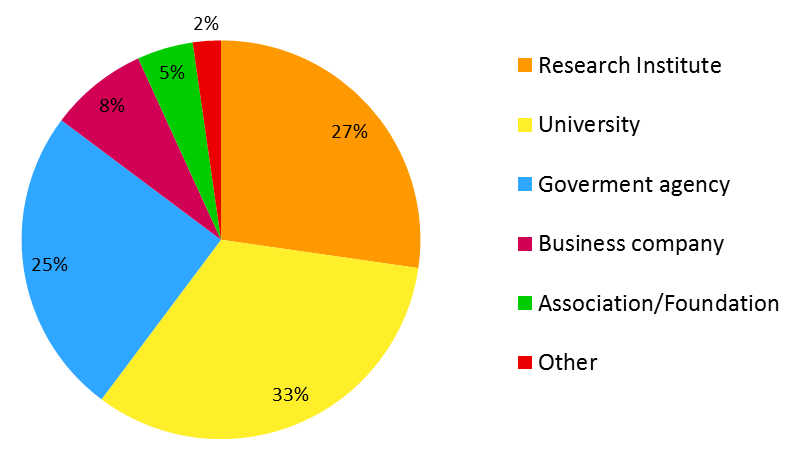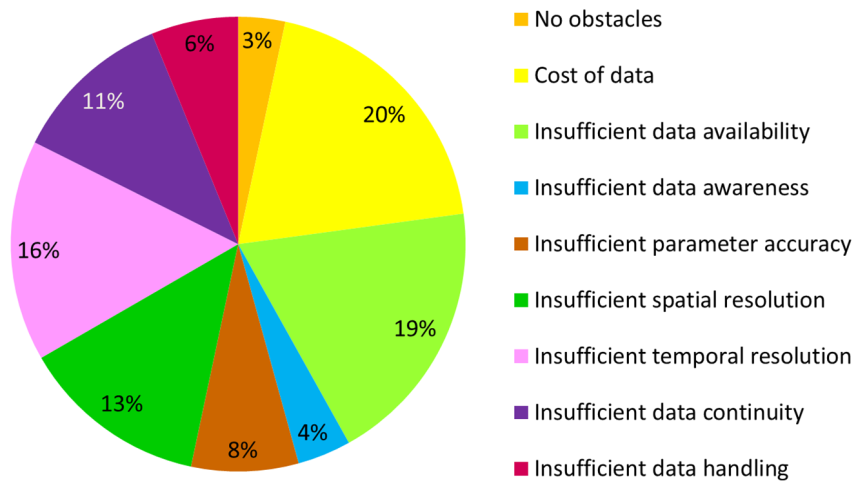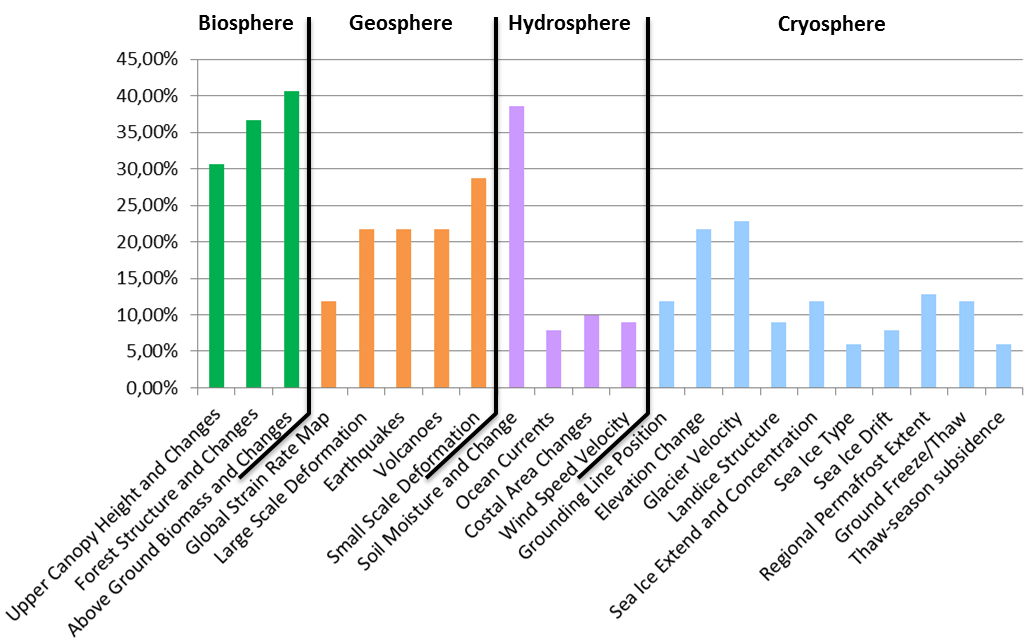The questionnaire was mainly addressed to public authorities, insurers, environmental organizations, and research institutions that work already with remote sensing data or derived products. The survey was active from November till December 2016. A total of 276 people were asked to participate in the questionnaire. From this 101 respondents completed the survey in full or in part. The diagram below shows the distribution of the respondents according to their affiliation. It can be observed that most of them are scientists from research institutes and universities. However, also a significant amount of users from governmental agencies and business companies took part at the questionnaire.
The next diagram shows the distribution of responses to the question: What are the main obstacles for you to use remote sensing data derived information products?
For most of the users, the data costs and the insufficient data availability plays an important role. These concerns were already included in the planning of the Tandem-L mission. In the mission proposal it has been specified that for scientific users the radar raw data and the higher-level information products will be made available free of charge. The data management and utilization concept developed for Tandem-L ensures that the data will be systematically acquired, processed to create higher-level products, securely archived and made available to the users. The data will be distributed to users via existing DLR online portals and spatial data services. On a processing and exploitation platform users will be able to access and process data and share experience and knowledge. This data management and data usage concept will ensure that all potential users of the Tandem-L raw data and higher-level information products will be able to find, access, understand, and exploit the mission data – now and in the future.
The overall interest of the users at the indicated high-level products is shown in the following figure. It should be noted that all participants of the questionnaire were able to mark several products of their interest. Therefore, the total sum of responses per product is greater than 100%.
It can be observed that most respondents were interested in biosphere products and the soil moisture and change product. The lower interest in the remaining products in the hydrosphere as well as most of the products in the cryosphere can be explained by the fact that the users of such products were significantly under-represented in the user group who received the questionnaire.



